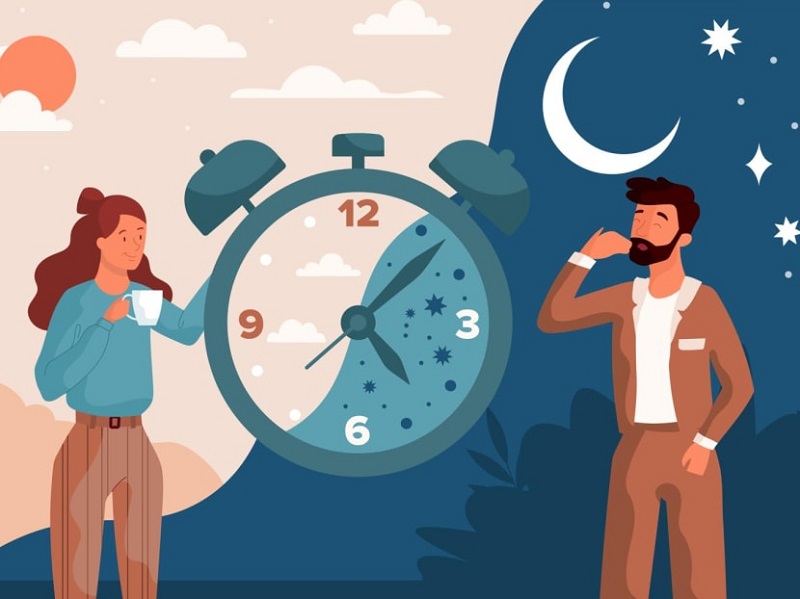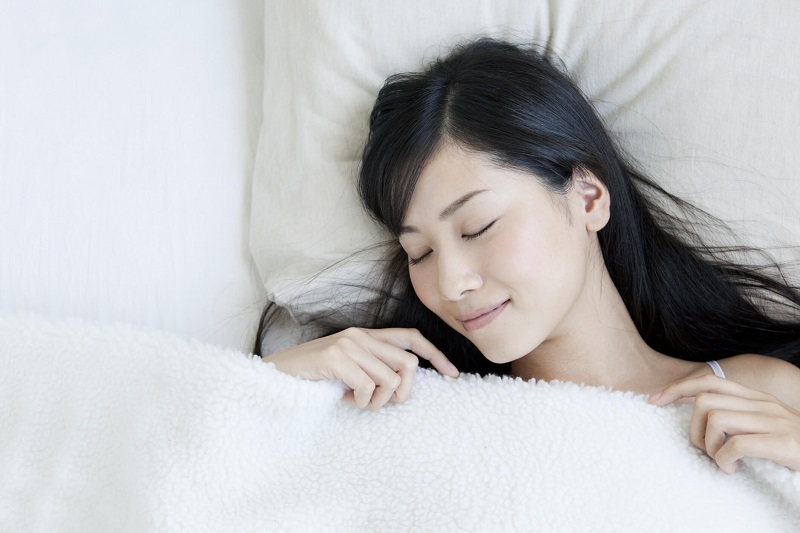Biphasic and polyphasic sleep: what are they and when are they recommended?
Available data indicates that biphasic and polyphasic sleep was the normal way of sleeping before industrialism came along. Those who have insomnia problems could try some of these options.
Biphasic and polyphasic sleep are alternative modalities to traditional sleep patterns. The usual thing is that people have a monophasic sleep model, that is, sleeping only once during the night.
However, there are also many who have biphasic and polyphasic sleep patterns. This means that they sleep two or more times during the day. This is also known as split sleep.
There are arguments for and against that way of resting. Great characters in history, such as Franz Kafka, Nikola Tesla, and Leonardo Da Vinci had these alternative patterns. All of them thought that in this way they potentiated their abilities. That’s right?
The most common sleep patterns
Monophasic sleep is what amounts to normal sleep. However, you have to know that this modality only became a common pattern after the Industrial Revolution. Before, biphasic and polyphasic sleep was more common.
Generally speaking, a person’s sleep pattern is determined by the circadian rhythm. This makes sleep and waking hours one way or another. However, not everyone is awake during the daylight hours or asleep during the dark hours.
A normal adult should sleep a minimum of 7 hours a day. Still, one study found that some people with a mutation in the ADBR1 gene can sleep 6.5 hours without any ill effects.
Also, the military and other groups have different patterns, with no evidence of any harm from it. In fact, many reports that this allows them to better maintain attention and alertness.
What is biphasic sleep?
Biphasic sleep has to do with sleeping in two segments. According to a 2016 investigation, this was the predominant modality before the Industrial Revolution in most cultures on the planet.
There are records that in various Western societies, it was customary to sleep in two distinct stages, separated by hour-long wakefulness. That time was used to pray, interpret dreams, create, have sex, or visit neighbors.
Thomas Wehr is a researcher of these phenomena and conducted a study on them. 8 volunteers were confined to a room for a month. They had 14 hours of darkness each day.
Sleep patterns began to change and eventually they adopted the biphasic sleep pattern. That is, they slept for 4 hours, then woke up for 2 or 3 hours, and then went back to sleep for another 4 hours.
Types of biphasic sleep
There are several ways to organize biphasic sleep. The most common modality is what is known as siesta and is still practiced very regularly in countries such as Spain or Greece. In general, one can speak of 3 types of biphasic sleep:
Short nap: sleep 6 hours at night and take a 20-minute nap in the middle of the day.
Long nap: sleep 5 hours at night and take a nap in the middle of the day, between an hour and an hour and a half.
Radical biphasic: consists of dividing the sleep time in two. Usually, a span of 4 hours is followed by 2 or 3 hours of wakefulness. Then another 4 hours of sleep.
Advantages and disadvantages
There is evidence for and against biphasic sleep. Short and long naps have been proven to promote memory, learning ability, alertness, and mood. However, they may not be a good idea if they later affect nighttime sleep, especially in children.
When you don’t get enough sleep or the quality of your sleep is poor, you are more likely to suffer from disorders such as cognitive difficulties, cardiovascular disease, obesity, and type 2 diabetes. In fact, some insomnia problems could be the effect of trying to incorporate sleep monophasic in people who require biphasic rest.
What is polyphasic sleep?
Polyphasic sleep is less common and involves sleeping in more than two segments per day. Most mammals have this pattern, although primates are monophasic.
Some think that with this modality optimal rest can be achieved. Others, on the contrary, view it with skepticism.
Types of polyphasic sleep
There are several types of polyphasic sleep. Many people create their own sleep segmentations at will or convenience. However, there are 3 that are predominant:
- Dymaxion schedule: assumes taking 4 30-minute naps every 6 hours. This yields a total of 2 hours of napping per day. It was practiced by the American architect Buckminster Fuller for 2 years and the doctors certified that he was healthy.
- Uberman schedule: involves taking a 20-minute nap every 4 hours for a total of 3 hours of sleep per day. It is the most rigid form of polyphasic sleep.
- Everyman schedule: Take a 3-hour sleep block at night, with 3 20-minute naps spread throughout the day. There are numerous variations on block and nap time.
Advantages and disadvantages
There is no scientific evidence on the benefits of polyphasic sleep. However, there is research done with sailors, according which it would be a good alternative to avoid periods of sleep deprivation for external reasons, such as a trip or a war.
Experts agree that polyphasic sleep can cause effects similar to those of sleep deprivation. This increases the risk of disorders such as obesity, high blood pressure, depression, anxiety, psychosis, heart disease, diabetes, and obstructive sleep apnea.
Adopt biphasic or polyphasic sleep
Many people report the benefits of biphasic and polyphasic sleep. However, a change in patterns must be done with care.
Most doctors indicate that it is very important to sleep the necessary hours, even if they are distributed differently. In this, as in so many aspects, there can be great differences between one and the other.
As a general rule, if a person sleeps through the night without interruption, there is no reason for them to attempt biphasic or polyphasic sleep. Conversely, if someone is having difficulty sleeping, trying these modalities may be a good idea.
The adaptation phase to the new patterns usually lasts between 2 and 3 weeks. If any discomfort is experienced, it is best to return to the previous pattern. In terms of sleep, there is still much to discover. The most important indicator is that there is a feeling of rest.




